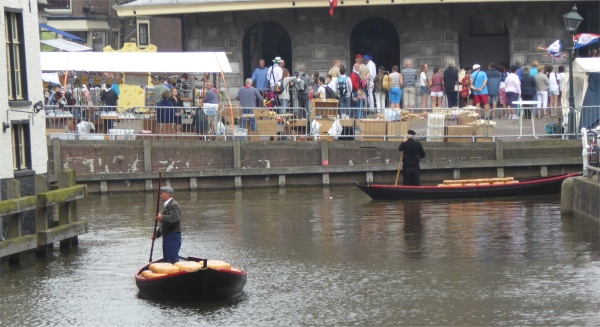 Old Men Punting Cheeses to the Cheese Market |
Off we marched up to the Waagplein, the backdrop for the traditional cheese market, held every Friday. We came across more boats loaded with cheeses as we neared the cheese market. The noise of the crowd at the market steadily increased from a murmur to a din as we neared the Waag, and the amplified voice of a female commentator rung out above it all. She spoke in Dutch, English and German; a clever lass. The cheese market first took place in 1622. However, cheeses have been weighed in Alkmaar since 1365. In bygone days the cheeses were transported by boat through the canal, hence the number of boats loaded with cheese we had seen in the canals.
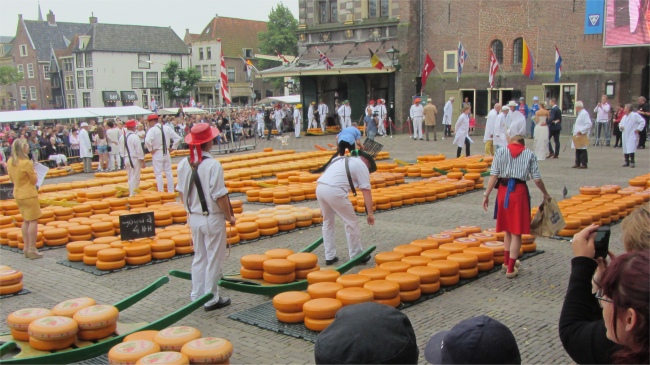 Cheeses Spread over the Waagplein - Notice the Wedding Couple in the Centre Right |
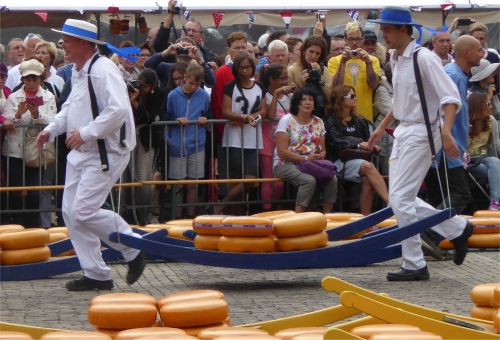 Cheese Carriers |
The cheese carriers all belong to a specific warehousing company; e.g. the red, green, yellow and blue warehousing company, recognisable by the colour of the barrow and straw hat of the cheese carrier. The cheese carrier guild still complies with the old traditions. For example, the leader, recognisable by his orange hat, is called "pops" by all the cheese carriers. The cheese carriers have their own nicknames too; the cheese carrier with the nickname "the Executioner" keeps precise track of the cheese carriers who are late, after which they are fined. Watching them, I could not help but think of Morris Dancers. The carriers sort of shuffled/trotted off with a funny arm movement that looked as though their arms were puppet arms on strings, really most peculiar, but this stepping out of time rhythm "cheese carriers' dribble" allowed the barrow to be transported with the least jogging of the cheeses. The barrows were carried using slings around the carriers' shoulders, a wise move since each cheese weighed a fair amount, with each cheese weighing 13.5Kg, and a wooden barrow weighing 25Kg, resulting in a 130Kg payload. The barrows were thus transported to the Waaghuis, where the cheeses were weighed, and then they were carried to hand carts, onto which the cheeses were loaded. When fully loaded, the carts were wheeled off to waiting lorries around the corner.
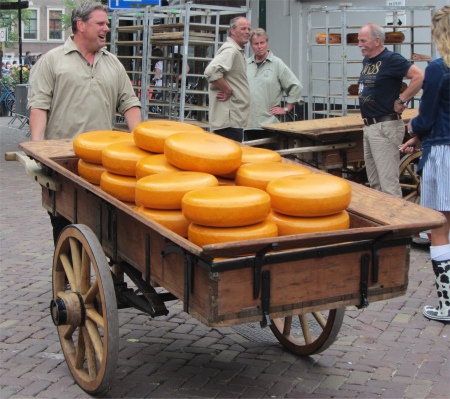 Cheeses Loaded onto a Handcart |
For some obscure reason, a wedding party turned up, and the bride and groom walked up to the Waaghuis for photos to be taken. Rex wondered who on earth would want part of their wedding ceremony in a cheese market. "Well, in England we always ask people to say 'cheese' when their photos are being taken," I replied. This comment was received by a hail of groans, I can't think why.
As an aside, the people of Alkmaar are also called cheese heads. This derives from the fact that during the siege the people of Alkmaar wore "helmets" on their heads to defend themselves. These helmets were actually the cheese moulds in which cheeses were pressed, so called cheese heads.
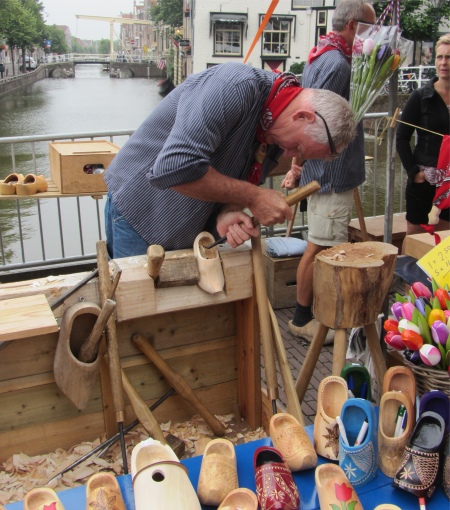 Clog Maker |
Once we had had our fill of the cheese market, Meryl melted away into a green grocer's for a spot of fruit retail therapy. Rex and I hovered about outside, wondering if she had actually started to plant the seeds and was waiting for them to grow. As we hung around on the pavement, eyeballing the citrus fruits, Rex came out with the wonderful comment, "Why are we standing about like a pair of lemons!"
Laden with fruit, we headed back to Duonita, and prepared ourselves for our trip to Amsterdam.
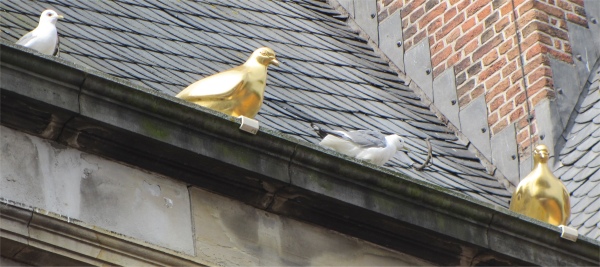 Silent Spectators of the Cheese Market |
We arrived early, so a swift orange juice in a harbour terrace cafe, and then we caught up with Richard and Angela. Over a beer in an outside cafe, I found them to be a charming couple: witty, intelligent and down-to-earth.
We enjoyed our meal together in the Dulac restaurant in Haarlemmerstraat which we visited four days earlier. Again we were accompanied by good, chilling-out music in the background, a blast of Eric Clapton for example. The evening was full of bonhomie and joie de vivre, though Meryl was a little miffed, in a joking way that Richard and Angela had managed to get into the Van Gogh museum.
After a thoroughly enjoyable evening we bade our farewells, and returned back to Alkmaar. At 11pm, the streets were now deserted, with occasional huddles of noise and laughter centred on the sprinkling of bars, cafes and restaurants. It had been a fun day.
